|
|
|
|
|
|
|
|
|
|
|
|
|
|
|
|
|
|
|
|
|
|
|
|
|
|
|
|
|
|
|
|
|
|
|
|
|
|
|
|
|
|
|
|
|
|
|
|
|
|
|
|
|
|
|
|
|
|
|
|
|
|
|
|
|
|
|
|
|
|
|
|
|
| |
|
|
D. How does CarBuilder produce a long
lasting repair? |
| |
| |
|
|
|
|
|
|
|
|
|
|
D. 1-Practices |
| |
| |
|
|
|
|
|
|
|
|
|
|
|
|
|
|
|
|
|
|
|
|
|
|
|
|
|
|
|
|
|
|
|
|
|
|
|
|
|
|
|
|
|
|
|
|
|
|
|
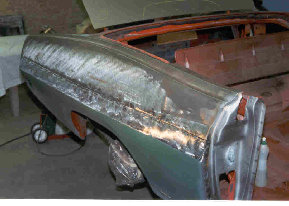 |
| |
|
|
|
|
|
|
|
|
|
|
|
|
|
|
|
|
|
|
|
|
|
|
|
|
|
|
|
|
|
|
|
|
|
|
|
|
|
|
|
|
|
|
|
|
|
|
|
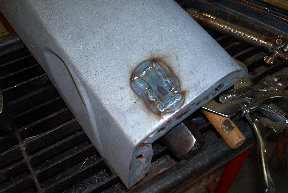 |
| |
|
|
|
|
|
|
|
Welds are total, not spot welds. Hammer welding is
used for repairs to panels. This is a skilled hand process to do
metalworking to shrink and forge as welds are done.
|
| |
| |
|
|
|
|
|
|
|
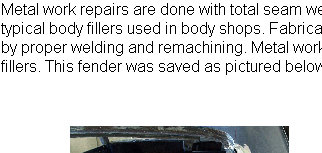 |
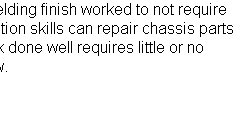 |
| |
|
|
|
|
|
|
|
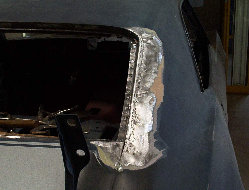 |
|
|
|
|
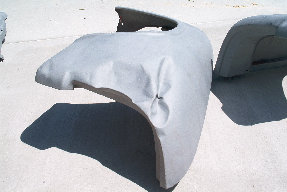 |
| |
|
|
|
|
|
|
|
|
|
|
|
|
|
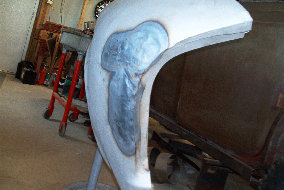 |
| |
|
|
|
|
|
|
|
|
|
|
|
|
|
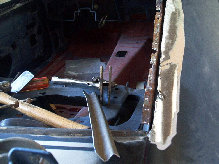 |
| |
|
|
|
|
|
|
|
|
|
|
|
|
|
|
|
|
|
|
|
|
|
|
|
|
|
|
|
|
|
|
|
|
|
|
|
|
|
|
|
|
|
|
|
|
|
|
|
|
|
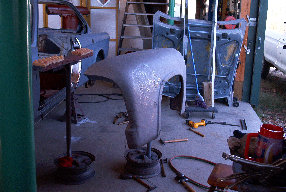 |
| |
|
|
|
|
|
|
|
|
|
|
|
|
|
|
|
|
|
|
|
|
|
|
|
|
|
|
|
|
|
|
|
|
|
|
|
|
|
|
|
|
|
|
|
|
|
|
|
|
|
|
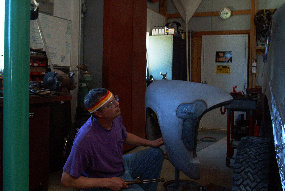 |
| |
|
|
|
|
|
|
Repair the original parts. Metal work skills and
fabrication reshape damaged surfaces back to like new. Solid original
sheet metal parts are almost always better to repair than replace.
(Most reproduction parts do not fit correctly and take significant
rework to make them right.) |
| |
| |
|
|
|
|
|
|
|
|
|
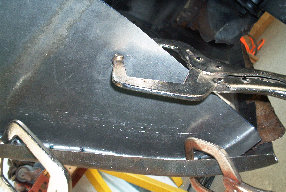 |
| |
|
|
|
|
|
|
|
|
|
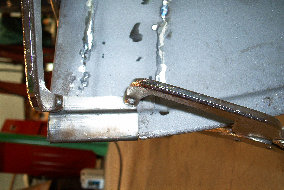 |
| |
|
|
|
|
|
|
|
|
|
|
|
|
|
|
|
|
|
|
|
|
|
|
|
|
|
|
|
|
|
|
|
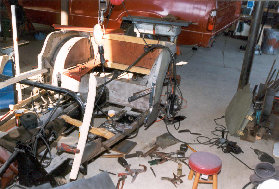 |
| |
|
|
|
|
|
|
|
|
|
|
|
|
|
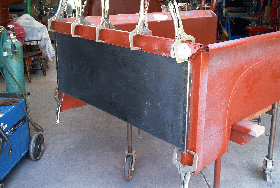 |
| |
|
|
Fabrication capability is essential to make improvements. Stainless
steel brake, fuel and vacuum lines are handmade. Sheetmetal working
tools include shears, brakes, stretcher/shrinkers, rolls, Pullmax
machine and hand tools, Lathes, Mills, drill presses, plasma cutting
CNC table, MIG, stick, and Acetylene welders, and powerful 3D CAD
Engineering Computer Systems is part of the versatile Fabrication
capability. |
| |
|
|
|
|
|
|
|
|
|
|
|
|
|
|
|
|
|
|
|
|
|
|
|
|
|
|
|
|
|
|
|
|
|
|
|
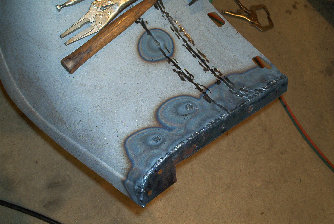 |
| |
|
|
|
|
|
|
|
|
|
|
|
|
|
|
|
|
|
|
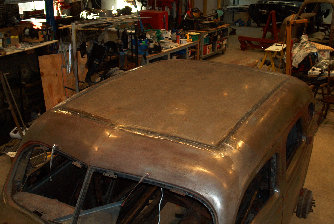 |
| |
| |
|
|
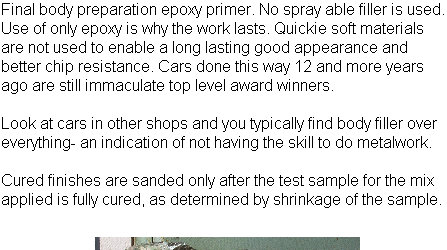 |
| |
|
|
|
|
|
|
|
|
|
|
|
|
|
|
|
|
|
|
|
|
|
|
|
|
|
|
|
|
|
|
|
|
|
|
|
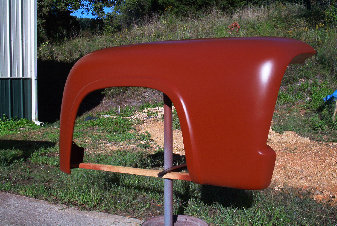 |
| |
|
|
|
|
|
|
|
|
|
|
|
|
|
|
|
|
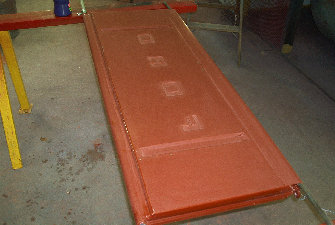 |
| |
|
|
|
|
|
|
|
|
|
|
|
|
|
|
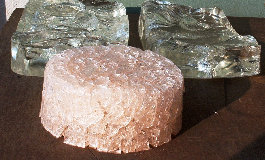 |
| |
|
|
|
|
|
|
|
|
|
|
|
|
|
|
|
|
|
|
|
|
|
|
|
|
|
|
|
|
|
|
|
|
|
|
|
|
|
|
|
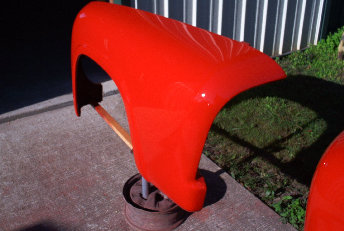 |
| |
|
|
|
|
|
|
|
|
|
|
|
|
|
|
|
|
|
|
|
|
|
|
|
|
|
|
|
|
|
|
|
|
|
|
|
|
|
|
|
|
|
|
|
|
|
|
|
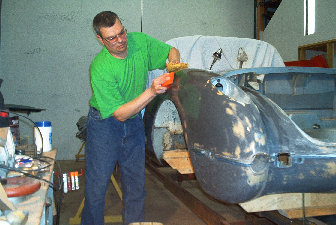 |
| |
|
|
|
Block
sanded panels by hand are straight and edges are the correct radii, or
sharpness. Machine sanders are rarely used as body filler is not
required to cover large areas. Cured epoxy is block sanded by hand to
perfection without spray able (2k urethane) body fillers. Appropriate
top finishes may be acrylic enamel, catalyzed acrylic enamel, acrylic
or nitrocellulose Lacquer, urethane, acrylic urethane, polyurethane,
alkyd enamel or epoxy. Applications for durability or specific
appearance of a part or vehicle cause the selection of paint material
from about ten different chemistries of paint. HVLP and older
technology equipment is maintained to apply the wide range of materials
in a custom built paint facility. Half of these paint materials are
rarely if ever used by commercial insurance repair body shops.
|
| |
|
|
|
|
|
|
|
|
|
|
|
|
|
|
|
|
|
|
|
|
|
|
|
|
|
|
|
|
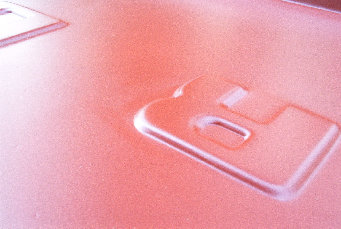 |
| |
|
|
|
|
|
|
|
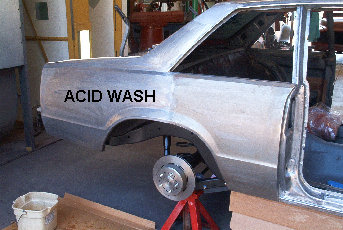 |
| |
| |
|
|
|
|
|
|
|
|
|
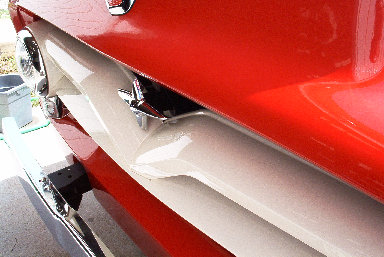 |
| |
|
|
|
|
|
|
|
|
|
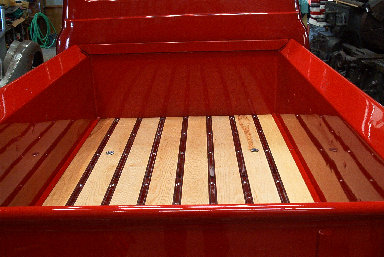 |
| |
|
|
|
|
|
|
|
|
|
|
|
|
|
|
|
|
|
|
|
|
|
|
|
|
|
|
 |
| |
|
|
|
|
|
|
|
|
|
|
|
|
|
|
|
|
|
|
|
|
|
|
|
|
|
|
|
|
|
|
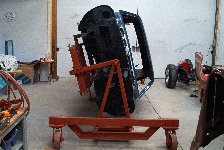 |
| |
|
|
|
|
|
|
|
|
|
|
|
|
|
|
|
|
|
|
|
|
|
|
|
|
|
|
|
|
|
|
|
|
|
|
|
|
|
|
|
|
|
|
|
|
|
|
|
|
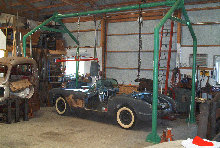 |
| |
|
|
|
|
|
|
|
|
|
|
|
|
|
|
|
|
|
|
|
|
|
|
|
|
|
|
|
|
|
|
|
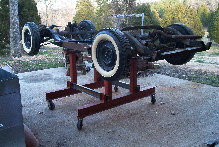 |
| |
|
|
|
Outstanding work is made possible because cleverly
designed tools are built to hold the body or chassis or large item in a
good position to do the required task. Paint booth, cranes, dollys, and
rotisserie were designed by the owner, an inventive engineer that has
degrees in Mechanical and Industrial Engineering. |
| |
| |
|
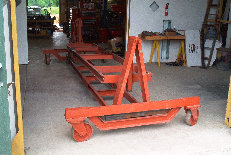 |
| |
|
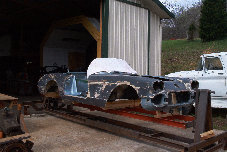 |
| |
|
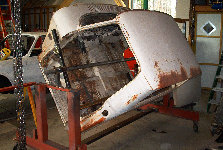 |
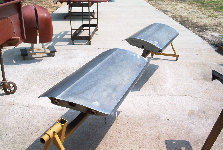 |
|
|
|
|
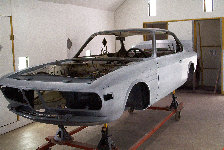 |
| |
|
|
|
|
|
|
|
|
|
Organization of the project is planned to identify the work that will
be done. A proven sequence of work is followed that ensures that
quality results are repeated. A project is steam cleaned and pressure
washed when it comes in. An organized disassembly identifies and
evaluates which parts are repairable or must be replaced. Batches of
similar process jobs are organized for sandblasting and refinishing,
repairs, or other activities such as replating or reupholstering.
|
|
|
|
|
|
|
|
|
|
|
|
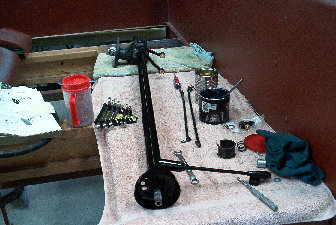 |
| |
|
|
|
|
|
|
|
|
|
|
|
|
|
|
|
|
|
|
|
|
|
|
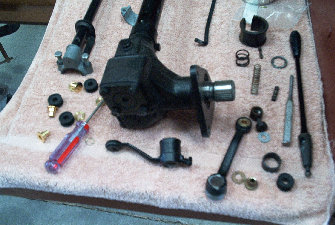 |
| |
| |
|
|
|
|
|
|
|
|
|
|
|
|
|
|
|
|
|
|
|
|
|
|
|
|
|
|
|
|
|
|
|
|
|
|
|
|
|
|
|
|
|
|
|
|
|
|
|
|
|
|
|
|
|
|
|
|
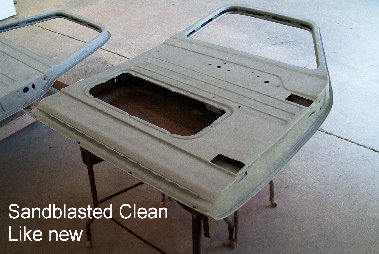 |
| |
|
|
|
|
|
|
|
|
|
|
|
|
|
|
|
|
|
|
|
|
|
|
|
|
|
|
|
|
|
|
|
|
|
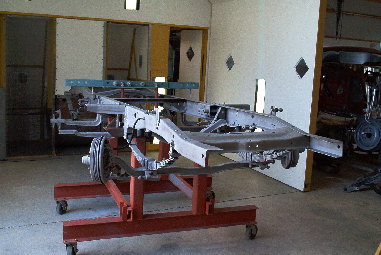 |
| |
D. 2-Materials |
| |
| |
|
|
|
|
|
|
|
|
|
|
|
|
Only
epoxy primers and trace amount, if any, of glass reinforced fiberglass
mold construction filler is used. The epoxy paints are applied only to
sandblasted prepared parts, not ever over old finishes or rust. The
usual body shop quality is urethane primers slathered with easy sanding
body filler and more spray able fillers which are sanded to the correct
shape. Easy to sand is easy to chip or scrape, and whatever the finish
is, it will chip with it. In time the body filler shrinks and looses
its surface shape to become an appearance defect such as a slight oval
depression. That defect cannot happen for epoxy that is fully cured
before it is sanded. Finish paint can retain outstanding appearance for
many years without shrinkage defects when done by carbuilder
restoration methods. |
| |
|
|
|
|
|
|
|
|
|
|
|
|
|
|
|
|
|
|
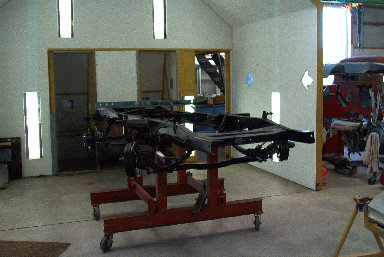 |
| |
|
|
|
|
|
|
|
|
|
|
|
|
|
|
|
|
|
|
|
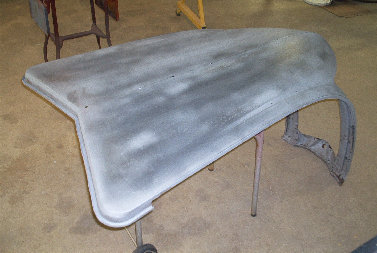 |
| |
| |
|
|
|
|
|
 |
| |
|
|
|
|
|
|
|
|
|
|
|
|
|
|
|
|
|
|
|
|
|
|
|
|
|
|
|
|
|
|
|
|
|
|
|
|
|
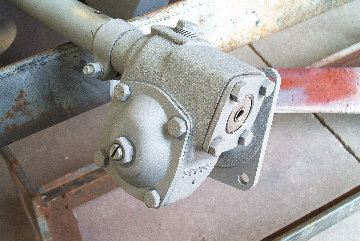 |
| |
|
|
|
|
Rust is
gone before tough epoxy finish is applied to seal out moisture. The
reason epoxy is superior for rust is because it is applied and it cures
without large amounts of evaporating solvents like any other possible
choice does. The epoxy will "wet" to the bottom of the tiniest pit in
the metal and seal over with the pit full of epoxy. Any other primer
may look the same when applied but it changes in time when the solvents
evaporate. The other primers leave an air bubble in the pit or they
crack as they shrink and the tiny pit gets a tiny crack opening. Air in
the pit or through that tiny crack is the trouble. That tiny air pocket
later starts the microscopic rust spot that shows up in the future. The
bubble is not able to produce enough pressure when heated to break out,
but the moisture in all air is enough to start rust. Body filler also
absorbs moisture and will foster rust if any rust is underneath or any
cracks allow moisture in. Epoxy does not absorb moisture and does not
get brittle and crack.
|
|
|
|
|
|
|
|
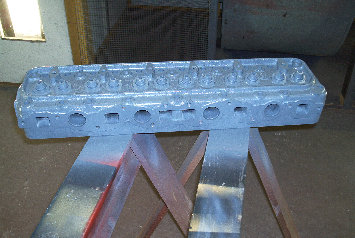 |
| |
|
|
|
|
|
|
|
|
|
|
|
|
|
|
|
|
|
|
|
|
|
|
|
|
|
|
|
|
|
|
|
|
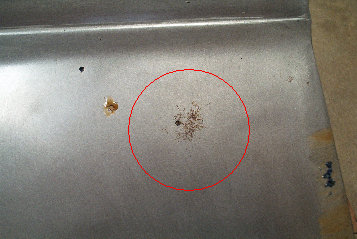 |
| |
| |
|
|
|
|
|
|
|
|
|
|
|
|
|
|
|
|
|
|
|
|
|
|
The rust in this picture forms under the paint
from a paint failure- factory applied finish- and it is called spider
rust for its shape. If this is sanded and then painted over, it will
come back again. You see cars all the time that re-rust months after
they get new paint from defects like this. Cleaning out all traces of
the rust with phosphoric acid and then sealing the metal with epoxy
primer is the only cure I have found that works for the long term. Few
other shops use acid wash because of the skill required.
|
| |
| |
|
|
|
|
|
|
|
|
E. CarBuilder Restoration
|
| |
| |
|
|
|
|
|
|
|
|
|
|
|
A total CarBuilder Restoration is high quality and
results in a car of excellent performance and pristine appearance. What
we do to create a restored car is a specialty art, because we have
engineered the equipment and have invented the skills for how to
complete a lasting, professionally restored car. |
| |
| |
|
|
|
|
|
|
|
|
|
|
|
|
|
|
|
|
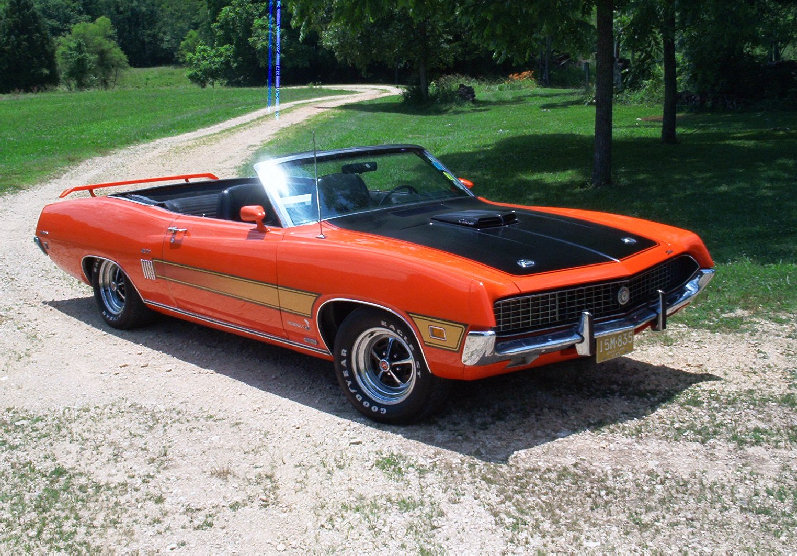 |
| |
|
|
|
|
|
|
|
|
|
|
|
|
|
|
|
|
|
|
|
|
|
|
|
|
|
 |
| |
|
|
|
|
|
|
|
|
|
|
|
|
|
|
|
|
|
|
|
|
Pictured here in TN while driven by owner on 2000
mile tour from Michigan in 2005 |
| |
| |
|
|
|
|
|
|
|
|
|
|
|
|
|
|
|
Copyright 2008 |
| |
|
|
|
|
|
|
|
|
|
|
|
|
|
|
|
|
|
|
|
|
|
|
|
|
|
|
|
|
|
GO BACK TO PREVIOUS PAGE |
| |





























































































